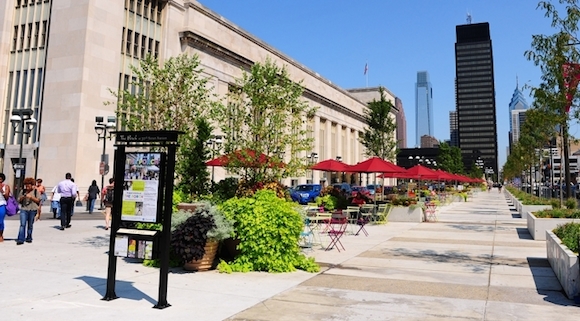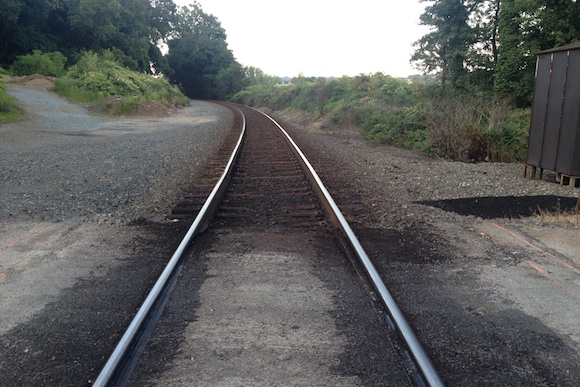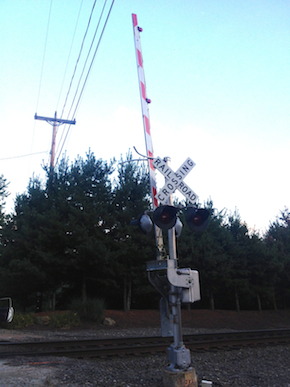It seems like you can't walk a mile in Pittsburgh without crossing tracks or hearing the sound of passing trains. At night, whistles blow, waking babies and sparking the barking of dogs.
The constant presence of trains is not an illusion. Recent analysis by PublicSource found that 40 percent of Pittsburgh residents live near enough to crude oil routes to be at risk if a train derails and catches fire, but despite proximity to tracks, city residents say they can't catch a break when it comes to riding the rails out of town. Only two trains runs out of Union Station per day, and to get from Pittsburgh to Harrisburg, just 204 miles away, takes five and a half hours — two hours longer than the journey takes by car.
Meanwhile, state officials and train travel aficionados are working hard to make sure locomotive travel isn't reduced to simply a romantic notion, and the Pennsylvania Department of Transportation (PennDOT) has launched a number of initiatives aimed at boosting ridership.
For example, PennDOT has partnered with Amtrak to create PATripsByTrain.com, a showcase of the wonderful places to visit by train between Harrisburg and Philadelphia, and launched Access the Keystone, a study seeking to identify ways in which different modes of transportation might be used to travel to and from train stations across the state.
In the eastern part of the state, the Department of Transportation has had success. Passenger travel on the Keystone line, serving destinations between Harrisburg and Philadelphia, has expanded significantly since 2006, when an express train began traversing the track. According to PennDOT spokeswoman Erin Waters-Trasatt, the Keystone line registered approximately 1.3 million trips last fiscal year, up from 890,000 before the 2006 upgrade.
More improvements are planned and many have been completed at stations along the line and on the track itself. Once the upgrade of the State Interlocking at Harrisburg is finished, trains will be able to switch lanes more swiftly, cutting the 90-minute trip from Harrisburg to Philadelphia by three to four minutes. Transportation officials are also looking at reducing the number of railroad crossings along the line, allowing trains to travel at faster speeds.
“Ridership has been going up and the train is really competitive with a vehicle, especially in suburban areas of Philadelphia,” says Waters-Trasatt. “Even the stations themselves are attracting different types of businesses. There was a brewery in Elizabethtown [Moo-Duck Brewery] that was attracted to the area near the station because of improvements that were made.”
On the Keystone line, Amtrak trains travel at speeds of up to 110 miles per hour and average about 75 miles per hour. On the Pennsylvanian, which runs from Pittsburgh to Harrisburg, average train speeds are just 45 miles per hour, with maximum speeds of 79 miles per hour.
“Steep grades, sharp curves, limited opportunities for passing slower freight trains, numerous at-grade crossings and aging infrastructure all contribute to increased travel times,” explains the Plan the Keystone website.
In addition to infrastructure problems, passengers say trains on the Pennsylvanian could be cleaner and newer, and many, including rail traveler Karen Lillis, would like to see station upgrades. Lillis frequently travels to Washington, D.C. and New York City, stopping at Philadelphia's 30th Street Station.
“I would love to see the train station in Pittsburgh become more of a 'place,' with food and maybe shops,” she says, lauding 30th Street for its bookstore, post office and many dining options (including healthy ones). “I can get off the train when it stops there for 25 minutes and get my lunch on the way from New York City.”
Lillis enjoys her time on trains, but thinks riding the rails in Western Pennsylvania has some drawbacks.
“The tough part about traveling by train from Pittsburgh is that Amtrak does not own their own rails out here,” she explains. “They share them with the freights, so they get delayed behind freight delays. For years, the D.C. train was running two to three hours late every time. Then they cleaned it up, and it ran on time for a few years. But it still gets delayed at random, wildly inconvenient intervals. If you count on being on time, you may ruin your plans.”
According to Waters-Trasatt, PennDOT only recently become responsible for the operational budget of the Pennsylvania line, and while Amtrak operates service on both the Keystone and Pennsylvanian lines, it only owns track for the Keystone. A freight company, Norfolk Southern Railway, owns the tracks that the Pennsylvanian line uses. And while Governor Tom Corbett recently announced $35.9 million in funding for upgrades to freight lines across the state, upgrading Norfolk Southern's line was not among the 39 projects selected.
“Norfolk Southern has the right of way with traffic, they have the priority of passage,” say Waters-Trasatt, explaining why Amtrak trains often travel so slowly on the Pennsylvanian route.
Craig Schulz, a spokesman for Amtrak, said the company would love to see improvements on the route. “From Amtrak's perspective, anything that's going to create better conditions for operations of trains is something we are very interested in,” he explains. Unfortunately, Norfolk Southern could not be reached for comment.
In 2011, a study began to determine whether it was feasible to reduce passenger travel times and increase train frequency on the Pennsylvanian route. The final draft of the report was completed in May 2013, but hasn't yet been released to the public; the Federal Railroad Administration is still reviewing it.
“We anticipate that the study will be complete before the end of the year,” wrote administration spokesman Michael England in an email. “Once complete, the study will be available to the public on our website.”
Waters-Trasatt encouraged citizens concerned about train travel to get in touch with elected officials and to attend public PennDOT meetings to raise the issue. There is state grant money to be had each year for revitalizing stations from PennDOT and the Multimodal Transportation Fund.
The Multimodal Transportation Fund offers funds for rail service, bus and transportation center improvements; streetscape, lighting, sidewalk and bicycle/pedestrian safety enhancements; coordinating transit services; rail-freight sidings and freight track upgrades; airport development and improvement to Pennsylvania's ports, among other things. The fund is replenished each year and may be obtained by municipalities, community development groups or businesses. A spokeswoman at the Pittsburgh Mayor's Office said she was not sure whether the city had applied for such funding. Meanwhile, Rich Kirkpatrick, a spokesman for PennDOT, said the fund could be used to improve Pennsylvanian service, though he didn't think it had been yet sought for that purpose.
↑ Top



